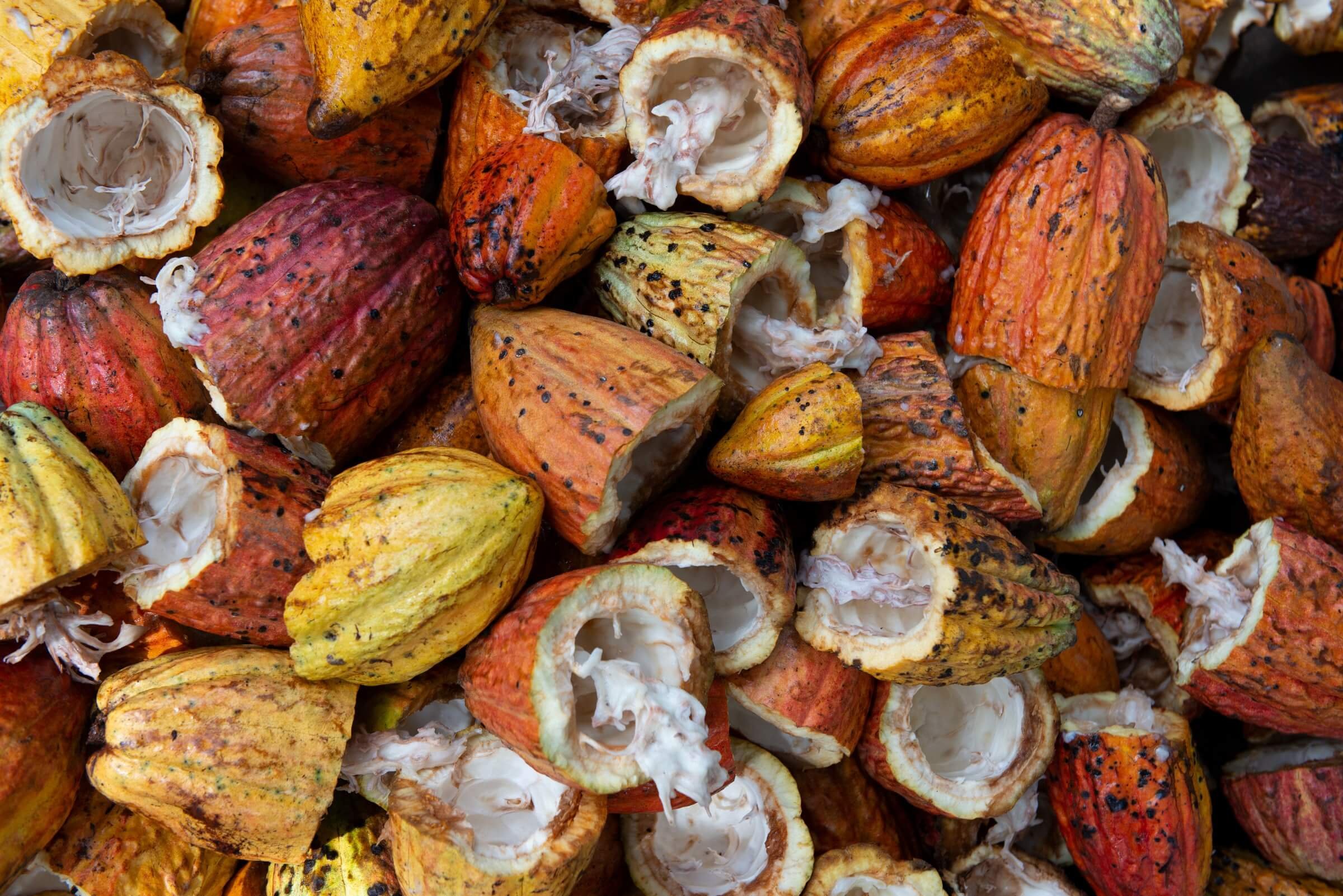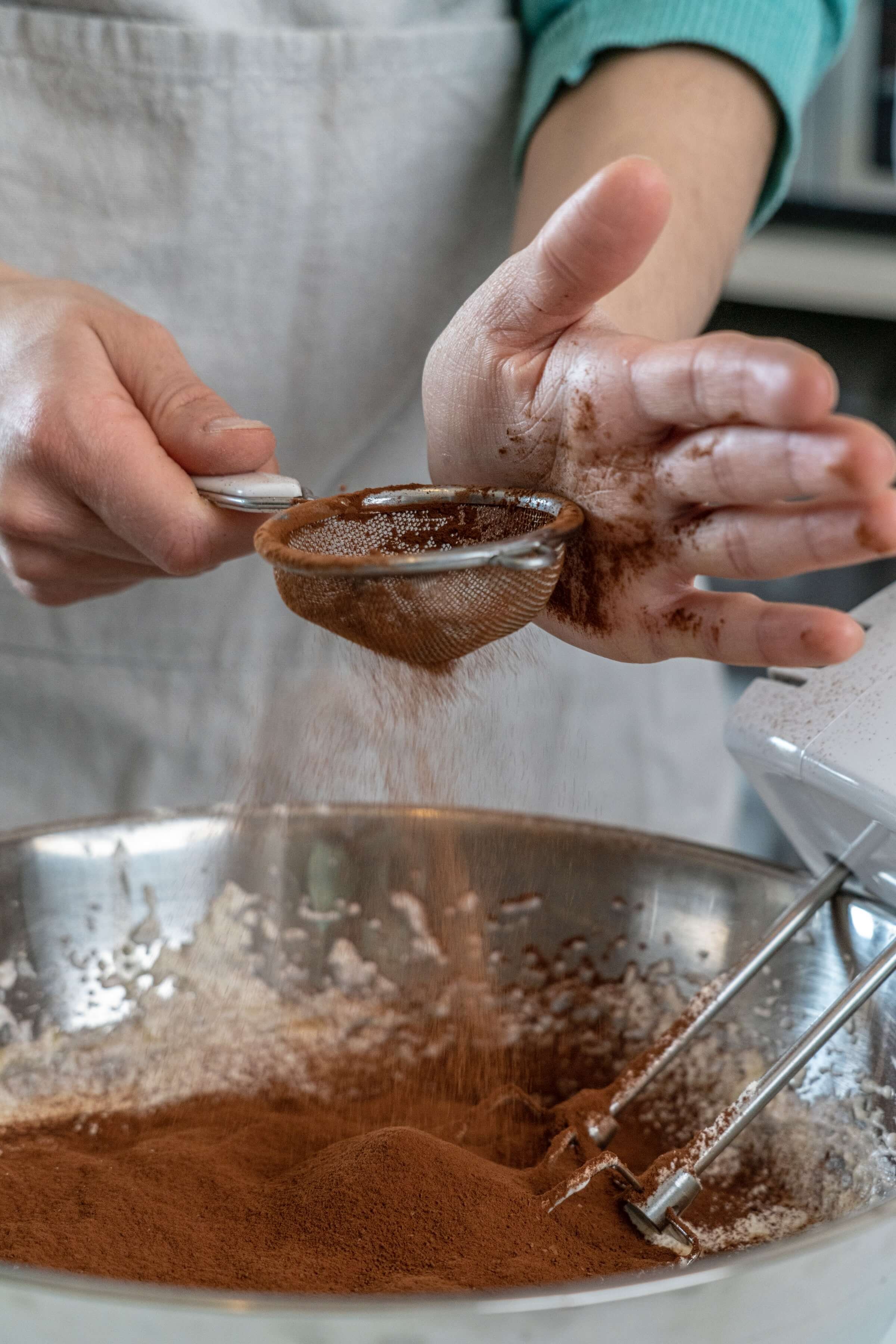Glossary of Chocolate Terminology: From Bean to Bar & Beyond
Chocolate and the making of chocolate and chocolate confections has a language all its own.
Bean to bar
The process of making chocolate bars from cacao beans.
Cacao
Cacao is the name for Theobroma cacao, it belongs to the genus Theobroma and is in the subfamily of Byttneriodeae in the mallow family Malvaceae. Theobroma cacao is one of 17 different speices of Theobroma and the one we use to make chocolate.
Cacao pod
The cacao pod is the fruit of the cacao plant and it contains the seeds, referred to as beans, that are used to make chocolate. Each pod contains 30-50 seeds.
Fermentation
After harvesting, beans are cleaned and fermented, sometimes in boxes or bags or with banana leaves.
Cocoa
Once fermented and dried, the cacao is usually referred to cocoa and the form such as beans or nibs.
Nibs
Nibs are the broken bits of the cacao bean, formed during roasting.
Winnowing
Once beans are cleaned and fermented and dried, they are roasted. Winnowing is removing the papery shells from the nibs.
Cocoa mass
Nibs are finely ground to make cocoa mass which is also known as cocoa liquor). Cocoa mass is solid at room temperature. When the mass is processed it yields two products: cocoa powder and cocoa butter. Cocoa beans are composed of about 40-50% cocoa butter.
Cocoa powder
Cocoa powder is the ground dried solids from the cocoa bean, with the cocoa butter removed.
Dutch-process cocoa powder
Dutch-processed cocoa is alkalized to neutralize the naturally occurring acids, giving it a mellower flavor and redder color.
Cocoa butter
Cocoa butter is the fat from the cocoa bean, with all the solid matter removed. It is the primary ingredient used to make white chocolate.
Conching
A conche is a large agitator that stirs and smooths the cocoa mass with heat. “Conching” is the process of rolling, kneading, heating, and aeration that takes place inside the conche. This process smooths out the cocoa mass, and it’s at this point that more cocoa butter or soy lecithin is sometimes added.
Tempering
Tempering involves heating and cooling chocolate at specific temperatures to stabilize it for making candy and confections.
Pistoles
Chocolate is molded into bars or drops or wafers called pistoles, which confectioners use to make their creations. Valrhona calls their drops fèves.
Bittersweet chocolate
Bittersweet chocolate typically contains 70% cacao although according to FDA regulation, it must only contain 35% cacao.
Semisweet chocolate
Semisweet chocolate typically refers to a slightly sweeter style of chocolate. Sweet and semisweet contain 15% to 35% chocolate liquor and have more sugar than bittersweet chocolate.
Milk chocolate
According to the FDA, milk chocolate must contain at least 10% chocolate liquor and 12% milk, with added cocoa butter and sugar.
White chocolate
White chocolate contains no chocolate liquor and is made by combining cocoa butter with sugar and milk solids.
Couverture
Couverture chocolate must contain a minimum of 35 percent cocoa solids and 31 percent cocoa butter. It is designed to be used for dipping and enrobing other ingredients.
Gianduja
Gianduja is the name of chocolate made with nut butter or pastes, typically hazelnut paste.
Bloom
Bloom is an unsightly whitish-gray discoloration due to a temperature or humidity change or improper tempering. It can be either sugar or fat bloom.
Ganache
A blend of chocolate, cream, and butter is used in confections and to fill truffles.





